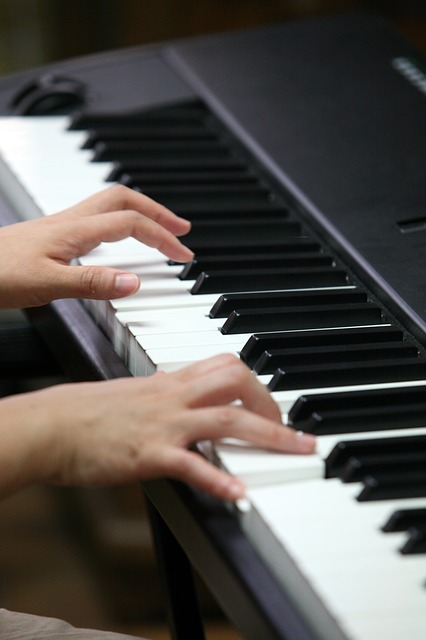The following two tabs change content below.


Greg Lee
Hi, my name is Greg Lee. I'm the creator of the Color Score Professional/Visual Chord Learning System. I love to share ideas and concepts about piano and keyboard playing in all styles of music. I believe the key to learning is having fun and making complicated things simple with visual tools and illustrations.
Latest posts by Greg Lee (see all)
- What is a minor/Major 7 Chord? - October 26, 2023
- 7 Chord Substitutions that Professionals Use - October 19, 2023
- 5 Simple Chord Tricks to Sound Amazing - October 5, 2023


 repeating itself. Even though playing the root of your chords in octaves is the norm, you'll find it to be a refreshing change to play a voicing in 10ths.
repeating itself. Even though playing the root of your chords in octaves is the norm, you'll find it to be a refreshing change to play a voicing in 10ths. If the octave is an interval of an eighth, a tenth is only a short distance away. With our example of C Major, C is our octave, so we only need to move two whole steps up from the octave to reach the 10th.
If the octave is an interval of an eighth, a tenth is only a short distance away. With our example of C Major, C is our octave, so we only need to move two whole steps up from the octave to reach the 10th. If we look at 10th intervals in other keys, we can use the same "octave plus two whole steps" formula to find them in any key.
If we look at 10th intervals in other keys, we can use the same "octave plus two whole steps" formula to find them in any key. The 10th in G Major
The 10th in G Major
 Major 10th intervals aren't the only ones we can play.
Major 10th intervals aren't the only ones we can play. Finding a minor 10th is slightly different than the Major 10th. Instead of two whole steps beyond the octave, just simply count a whole step plus a half step.
Finding a minor 10th is slightly different than the Major 10th. Instead of two whole steps beyond the octave, just simply count a whole step plus a half step. E minor voicing in 10ths
E minor voicing in 10ths Just as the Major 10th can be thought of as the Major 3rd an octave higher, the minor 10th can be thought of as the minor 3rd an octave higher.
Just as the Major 10th can be thought of as the Major 3rd an octave higher, the minor 10th can be thought of as the minor 3rd an octave higher.
 This is definitely a good option when you have black keys in the chord because this makes it an ever longer stretch.
This is definitely a good option when you have black keys in the chord because this makes it an ever longer stretch. You can also add the 5th of the chord to the voicing in 10ths. Of course this often requires you to play the chord melodically also.
You can also add the 5th of the chord to the voicing in 10ths. Of course this often requires you to play the chord melodically also.


